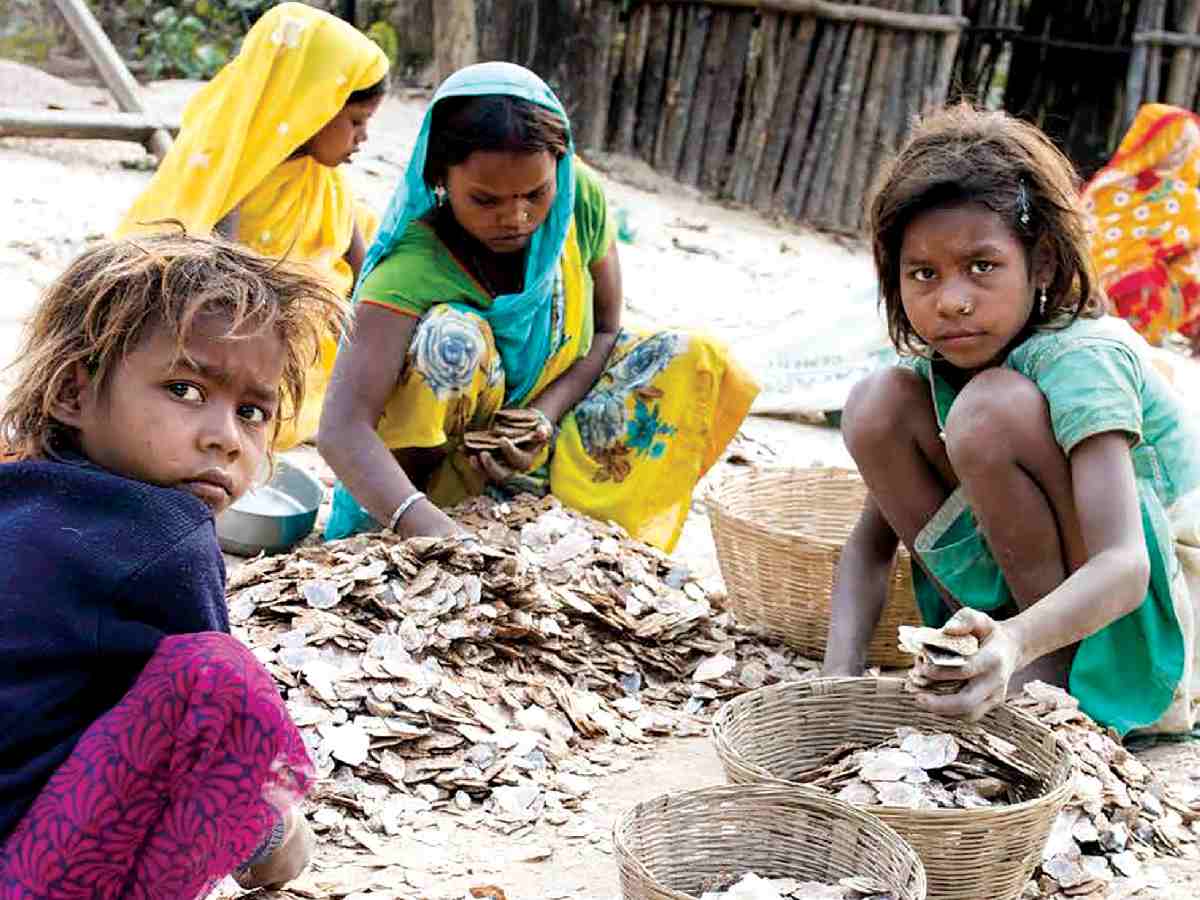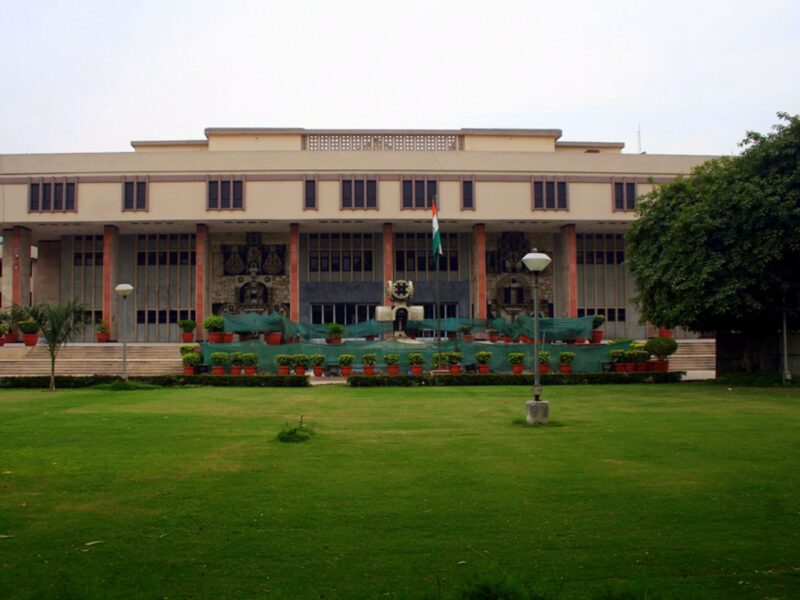Delhi: Child labour remains a disturbing reality in the national capital, with multiple incidents surfacing regularly. Even as we mark the 14th World Day Against Child Labour, Delhi has not managed to rid itself of the chains that continue to bind its children—forcing many into odd jobs for survival.
In 2024, authorities in Delhi rescued 1,170 children in nearly 100 cases of child labour and trafficking. This marked a slight decline from 1,257 children rescued in 126 cases in 2023. These minors, often found working in hazardous conditions for minimal pay, endured long hours of exploitative labour—underlining the continuing crisis of child exploitation in India’s capital.
Tackling trafficking with surveillance and task forces
Efforts to curb child trafficking have intensified. Delhi Police’s Crime Branch has expanded surveillance and deployed Anti-Human Trafficking Units (AHTUs) across the city. “We are working relentlessly to curb trafficking incidents in Delhi,” said a senior police official. He explained that strategic placement of AHTUs and better coordination have made it easier to target trafficking and labour networks effectively.
Also read: Quest to document a fading heritage of rural Delhi
Despite the decline in reported cases, non-governmental organisations (NGOs) warn that underreporting and changing trafficking tactics continue to hinder long-term progress.
One new challenge has emerged in the form of rogue placement agencies exploiting legal loopholes. These agencies often place minors in homes or businesses, where they work as domestic help or labourers in unsafe conditions for paltry wages.
According to Delhi Police, while intra-city child trafficking is relatively rare, the Capital’s position as a transit hub—due to its proximity to Gurugram and Noida—makes it a key node for trafficking networks. Many children are brought from rural areas or neighbouring states and pushed into labour-intensive work.
Changing tactics and growing challenges
Naved Anjum of Prayas Juvenile Aid Centre pointed to the shifting tactics of traffickers. “While reported child labour cases have decreased, perpetrators are exploiting loopholes. Placement agencies play a significant role, often luring impoverished families with payments or posing as relatives to gain custody of children,” he said.
Anjum added that trafficking cases are sometimes misclassified as kidnappings, leading to an apparent dip in figures. “The nature of exploitation has shifted,” he noted. “Unlike in the past, some children are sent by their families or come voluntarily, only to be trapped in exploitative conditions through deceptive agencies.”
The Child Labour (Prohibition and Regulation) Act, 1986, prohibits the employment of children under 14 and restricts those aged 14 to 18 from engaging in hazardous work. Yet, enforcement remains patchy, hampered by systemic gaps and the secretive operations of trafficking rings.
Factory raids highlight widespread exploitation
On October 24, 15 children aged between seven and 17 were rescued from a toy factory in Karawal Nagar, north-east Delhi. They had been forced to work 12-hour shifts for a mere Rs 500 a week, often suffering physical abuse.
Similarly, raids on August 5 and 6, 2024, rescued 73 children—18 from a jute factory in Bhajanpura and 55 from a toy factory in the Narela-Bawana industrial belt—underscoring the scale of the issue in Delhi’s manufacturing zones.
These operations are often carried out with the help of child rights NGOs. Rakesh Kumar of Bachpan Bachao Andolan explained, “Our work involves identifying factories and workplaces exploiting children. We conduct reconnaissance, inform the police, and assist in raids to apprehend perpetrators.”
Ravi Kant, founder of Shakti Vahini, stated that approximately 29,224 children were rescued in Delhi between April 2023 and March 2024.
Role of placement agencies in domestic exploitation
A senior Delhi Police official clarified that raids based on tip-offs are conducted only within the capital. “Most of these children are brought by relatives or placement agencies that contact their parents directly. These families are often impoverished and see the ‘big city’ as a chance for their children to earn. We can only investigate or act in other states like Gurugram or Noida if an FIR is registered in Delhi,” the official said.
Prayas Juvenile Aid Centre (JAC) has been at the forefront of building a protective framework for children. Its team actively participates in rescues and policy advocacy.
Jeebanjyoti Mohanty, Joint Director of Prayas JAC, explained that rescue operations often take months of preparation. “We begin by surveilling factories to understand how children are employed. Once we confirm the details, we coordinate with the police to carry out raids,” she said.
Mohanty underscored the role of placement agencies, particularly in placing children as domestic help. “We’ve documented multiple cases where children working in households were physically abused. These agencies send representatives to remote villages in Jharkhand, Odisha, Uttar Pradesh, and Bihar, offering parents money for their children. Because these families are extremely poor, they rarely object. Once in Delhi, the children are forced into factories or homes, often suffering horrific treatment,” she explained.
According to Mohanty, these children typically earn between Rs 100 and Rs 150 a day—amounting to just Rs 3,000 a month. The physical toll is severe. “Minor errors can result in beatings, leading to unimaginable injuries, especially for children employed in households,” added a representative from Shakti Vahini.
Activists report that many of these placement agencies are based in Shakurpur and Karol Bagh, while others operate out of Gurugram and Noida. In one such case in Noida, five people were charged, including the child’s mother, uncle, aunt, and employers.
Also Read: Valmik Thapar, the tiger conservationist’s little known side
Judicial orders and institutional inertia
On January 10, the Delhi High Court—led by Acting Chief Justice Vibhu Bakhru and Justice Tushar Rao Gedela—ordered the Delhi government to submit a detailed status report, certified by the Chief Secretary Dharmendra. The report was to include district-wise details of task force meetings, rescue operation plans, and rehabilitation steps for rescued children.
The court emphasised the need for accountability at the district level. It also asked Delhi Police for a status update on a 2023 FIR related to the assault and molestation of volunteers during a child labour rescue.
This intervention stemmed from a petition by Bachpan Bachao Andolan, filed after a 2019 fire at a factory in Anaj Mandi killed more than 40 people, including minors. The incident reignited public demands for stricter action against trafficking and child labour.
Advocate Prabhsahay Kaur, representing the NGO, pointed out that Rule 17C of the Child and Adolescent Labour Rules mandates monthly district task force meetings. “Many districts failed to conduct these meetings or rescue operations in 2024. Action typically takes place only after court orders,” she said.
Commission for child rights remains non-functional
The Delhi Commission for Protection of Child Rights has remained defunct since July 2023. None of its vacancies have been filled, despite the High Court directing the Delhi government to do so within six weeks. The absence of an active commission has weakened institutional response to child labour and trafficking in the capital.





